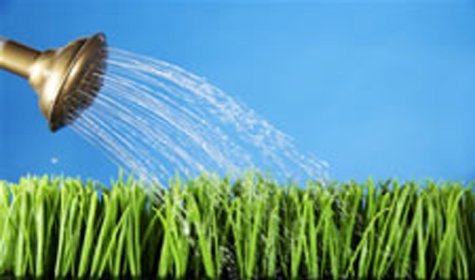Well, we have just about made it through the summer, and to be honest, it wasn’t that bad! I say that with a bit of sarcasm, because as of late, the rain that we had been getting earlier in the year has diminished by a wide margin. That being said, water management around our homes and gardens is very important to Texas homeowners. It is estimated that 25-30% of lawn maintenance costs are from watering. Good, responsible water management is essential and goes hand in hand with soil type, grass species, turf management, and water quality which influence the amount of supplemental water that is required for lawns.
Sandy, course textured type soils absorb water at a much faster rate than finer textured soils but retain less moisture; therefore sandy soils require frequent applications of water at a lighter rate. Clay soils retain more moisture, and require less frequent watering. Clay soils absorb water very slowly, so application should be slower and extended over a longer period of time.
Grass species and management practices largely determine the amount of supplemental water required for lawns. Grasses with good drought tolerance should survive without watering. Grasses with only fair to poor drought tolerance may not survive extended dry times without watering.
Management also influences the amount of water needed to maintain a healthy green lawn. Frequent fertilizer and close mowing tend to greatly increase water use. Applications of soluble nitrogen fertilizers during late growing season and summer months significantly increase water use too. Spring and fall fertilizer applications meet most grass requirements for nutrients without significantly increasing water needs. When lawns appear yellow because of iron deficiency, apply iron sulfate or iron chelate to improve color without increasing water needs.
During hot, dry conditions raise the mowing deck on your lawn mower to reduce water needs. Grass mowed at 2-3 inches maintains a deeper root system than grass mowed to 1 inch. Deeper roots need less supplemental water. Mow St. Augustine, bluegrass, and tall fescue at 3 inches during the hot weather. Do not mow Bermudagrass or Zoysia higher than 2 inches.
Timely application of water is required for effective and efficient water use too. Apply water just as the grass begins to discolor and wilt. Most grasses turn dark and dull and the leaf blades begin to fold or roll when grass goes into water stress. The time of day is also very important to influencing the effectiveness of watering. Late night or early morning are considered the best times to water. Generally the winds are calmer during those times and the temperatures are lower so that evapotranspiration is not as big an issue. Apply enough water to the lawn to wet the top 4-6 inches of soil. Light, frequent applications of water produce weak, shallow rooted turf that is highly susceptible to stress. The application of ½ to 1 inch of water will adequately take care of most soils. Less water is required on sandy soils.
The key to success in watering home lawns is to condition the grass to get by on as little supplemental water as possible for that grass to survive.
Follow these simple rules for developing a deep-rooted grass which can stand up to dry and drought-like conditions: select an adapted, drought tolerant grass, water as infrequently as possible, at signs of wilting apply adequate water to wet soils to 4-6 inches depth, do not apply water beyond the point of run-off, aerate the lawn so water can penetrate to the proper depth, avoid afternoon watering, raise mower height to ½ to 1 inch during summer months, and avoid high applications of soluble nitrogen fertilizer during the summer months.






